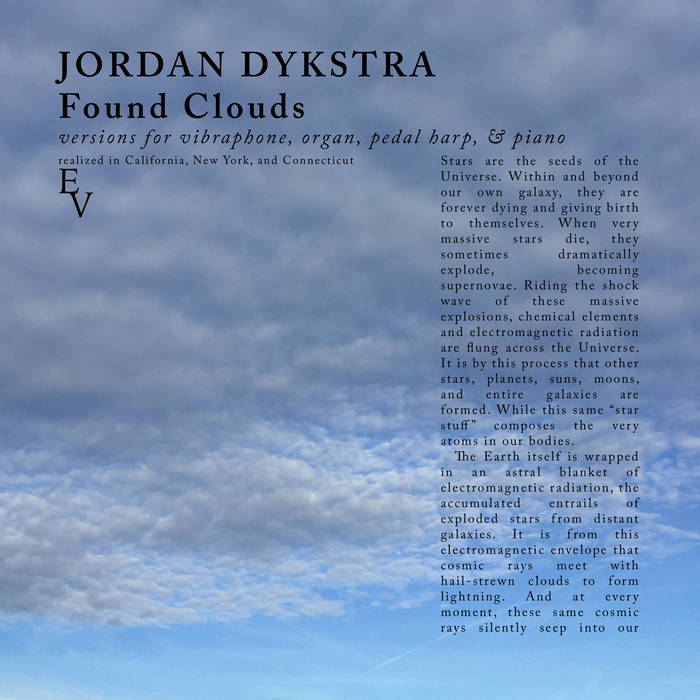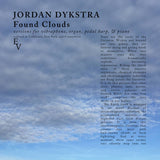クイックビュー
{"id":9009653580026,"title":"Machine Listening \/\/ Environments 12: New Concepts In Acoustic Enrichment LP","handle":"machine-listening-environments-12-new-concepts-in-acoustic-enrichment-lp","description":"\u003cp\u003eオーストラリアの実験グループMachine Listeningが、2025年6月にベルギーの実験レーベルFutura Resistenzaからリリースしたレコードです。\u003c\/p\u003e\n\u003cp\u003eサウンドポエトリー〜物音15曲を収録。ゲートフォルド仕様です。\u003c\/p\u003e\n\u003cp\u003e※デジタル音源を無料でお送りいたしますのでお気軽にご連絡くださいませ\u003c\/p\u003e\n\u003cp\u003e以下、レーベルによる解説です。\u003c\/p\u003e\n\u003cp\u003e\u003cem\u003e\"『Environments 12』は、かつて人気を博した『Environments』シリーズへの新たな思索的追加作品である。このシリーズは1969年から1979年にかけて発表された11枚のレコード群で、気分を変える自然音録音の大衆市場を先取りしたものだった。今や惑星規模の計算が日常化した時代において、更新されているのは環境そのものである。音響景観の再現・合成・管理は普遍化され自動化された。サイバネティック生態学の名のもとに、スピーカーとマイクが生物圏全体に張り巡らされている。アーティスト兼研究者ショーン・ドックレイ、ジェームズ・パーカー、ジョエル・スターンにより2020年に設立されたMachine Listeningは、共同研究と芸術的実験のためのプラットフォームである。この集団は、執筆、インスタレーション、キュレーション、ソフトウェア、ラジオ、教育、パフォーマンスなど、多様なメディアと制作手法を横断して活動している。そしてこれが彼らがリリースした初のLPである。これは人新世のための心をひっくり返す台本だ:ポスト歴史的なフィールドレコーディング。攻撃的に無遠慮で、思慮深く狡猾な、あなたの内耳をくすぐる一枚。\u003c\/em\u003e\u003c\/p\u003e\n\u003cp\u003e\u003cem\u003eこの作品は、歴史的、現代的、そして空想的な一連の場面で展開され、声のパフォーマーたち(フランシス・プラニ、ジェニー・ヒッキンボサム、デヴィッド・チェズワース、キャサリン・ライアン、ジャスパー・ドックレイ、ロスリン・オルランド)とその生成的な声のクローンたちによって語られる。この人間以上の合唱団が、心理的に究極の海岸、サンゴ礁の子守唄、動物園の囲いのために設計された自然の交響曲、クジラやカラスのための大規模な言語モデルなどの物語を語り、繰り返し語る。このレコードは、生物圏、人間、テクノロジーの境界がほぼ完全に曖昧になった世界を想像する。有機物が、生命を呼び起こすために、それ自体の合成的な再現にさらされなければならない、レプリカの複製という仮説上の空間である。\u003c\/em\u003e\u003c\/p\u003e\n\u003cp\u003e\u003cem\u003e『Environments 12』は現実の停止を伴い、あるいは要求する。これは実在の声の合唱か、それとも複製か?動物はマイクに敵意を抱くのか?フィールドレコーディングが文化的遺物として扱われ、音響生物学者が収集した「データ」の中に補間される時、それは何を意味するのか?真実と抽象化を区別する物差しはここには存在しない。そしてその効果は不可解な中毒性を帯びている:子守唄のような歌声がゆっくりと完全な拡張状態へと回転し、海の音を模倣するアンサンブルが輝かしい旋律でまねをし、壊れた声がワイヤーの中でハミングする破片から構築された夢の和音。\u003c\/em\u003e\u003cbr\u003e\u003c\/p\u003e\n\u003cp\u003e\u003cem\u003eEnvironments 12 は、物語的に、容易に識別できる現実から切り離されているのと同じように、音的にも、ある特定のジャンルに分類されることを拒否している。その効果は、ウォルター・マイオリ、フレッド・ゲイルズ、そしてサウンド・レポーターズの一団が、デジタル・ゴリラの囲いの中に放り込まれたような、あるいは、ロバート・アシュリーの『ドン』がリンダを離れて、代わりに大阪の水族館に行ってイルカの声を聞くような、そんな感じであろう。この作品のパレットは、ポール・デマリニスの『Songs Without Throats』や、ロン・クイヴィラとニコラス・コリンズの『Going Out With Slow Smoke』の、その愛らしい音楽スタイル(特定できるサウンドというよりもアプローチ)のファンに間違いなく合うだろう。しかし、そのドラマチックさには非常に不調和な部分もある。レトロフューチャーというよりも、まったく独自の連続体の中にあり、それゆえにさらに魅惑的である。\u003c\/em\u003e\u003c\/p\u003e\n\u003cp\u003e\u003cem\u003e要するに、『Environments 12』は、深く困惑させ、美しく派手で、そのグロテスクさすべてに抑制できない喜びがある。ハイコンセプトと不遜な不条理のバランスをこれほど巧みに取っているレコードはめったにない。ましてや、明確な感情的な核心を維持しながら、という条件を加えるとさらに稀である。\"\u003c\/em\u003e\u003c\/p\u003e\n\u003cp\u003e\u003ciframe style=\"border: 0; width: 100%; height: 120px;\" src=\"https:\/\/bandcamp.com\/EmbeddedPlayer\/album=3117061715\/size=large\/bgcol=ffffff\/linkcol=0687f5\/tracklist=false\/artwork=none\/transparent=true\/\"\u003e\u003c\/iframe\u003e\u003c\/p\u003e\n\u003cp\u003eレーベルその他作品は\u003ca href=\"https:\/\/tobirarecords.com\/collections\/futres\"\u003eこちら\u003c\/a\u003e \/\/\/ Click \u003ca href=\"https:\/\/tobirarecords.com\/collections\/futres\"\u003ehere\u003c\/a\u003e to see more Futura Resistenza releases available at Tobira.\u003c\/p\u003e\n\u003cp\u003e-------------------------------------\u003c\/p\u003e\n\u003cp\u003e\u003cmeta charset=\"utf-8\"\u003eAsk us for digital files.\u003cbr\u003e12\" black vinyl in gatefold sleeve. \u003c\/p\u003e\n\u003cp\u003e\u003cstrong\u003eTracklist\u003c\/strong\u003e:\u003c\/p\u003e\n\u003cp class=\"MsoNormal\"\u003e1. Acoustic enrichment (prelude) 00:19\u003cbr\u003e2. Environments 1 02:21\u003cbr\u003e3. Psychologically ultimate seashore 01:03\u003cbr\u003e\u003cspan style=\"font-family: -apple-system, BlinkMacSystemFont, 'San Francisco', 'Segoe UI', Roboto, 'Helvetica Neue', sans-serif; font-size: 0.875rem;\"\u003e4. But they weren't perfect 02:44\u003cbr\u003e\u003c\/span\u003e\u003cspan style=\"font-family: -apple-system, BlinkMacSystemFont, 'San Francisco', 'Segoe UI', Roboto, 'Helvetica Neue', sans-serif; font-size: 0.875rem;\"\u003e5. I like to think 02:59\u003cbr\u003e\u003c\/span\u003e\u003cspan style=\"font-family: -apple-system, BlinkMacSystemFont, 'San Francisco', 'Segoe UI', Roboto, 'Helvetica Neue', sans-serif; font-size: 0.875rem;\"\u003e6. Reef mega mix 01:18\u003cbr\u003e\u003c\/span\u003e\u003cspan style=\"font-family: -apple-system, BlinkMacSystemFont, 'San Francisco', 'Segoe UI', Roboto, 'Helvetica Neue', sans-serif; font-size: 0.875rem;\"\u003e7. Reef lullaby 03:17\u003cbr\u003e\u003c\/span\u003e\u003cspan style=\"font-family: -apple-system, BlinkMacSystemFont, 'San Francisco', 'Segoe UI', Roboto, 'Helvetica Neue', sans-serif; font-size: 0.875rem;\"\u003e8. That is a beautiful memory 01:09\u003cbr\u003e\u003c\/span\u003e\u003cspan style=\"font-family: -apple-system, BlinkMacSystemFont, 'San Francisco', 'Segoe UI', Roboto, 'Helvetica Neue', sans-serif; font-size: 0.875rem;\"\u003e9. Dream chord \/ be in 03:32\u003cbr\u003e\u003c\/span\u003e\u003cspan style=\"font-family: -apple-system, BlinkMacSystemFont, 'San Francisco', 'Segoe UI', Roboto, 'Helvetica Neue', sans-serif; font-size: 0.875rem;\"\u003e10. Round and round 02:40\u003cbr\u003e\u003c\/span\u003e\u003cspan style=\"font-family: -apple-system, BlinkMacSystemFont, 'San Francisco', 'Segoe UI', Roboto, 'Helvetica Neue', sans-serif; font-size: 0.875rem;\"\u003e11. Conversations we can't understand 02:24\u003cbr\u003e\u003c\/span\u003e\u003cspan style=\"font-family: -apple-system, BlinkMacSystemFont, 'San Francisco', 'Segoe UI', Roboto, 'Helvetica Neue', sans-serif; font-size: 0.875rem;\"\u003e12. Gorilla Tropics 01:39\u003cbr\u003e\u003c\/span\u003e\u003cspan style=\"font-family: -apple-system, BlinkMacSystemFont, 'San Francisco', 'Segoe UI', Roboto, 'Helvetica Neue', sans-serif; font-size: 0.875rem;\"\u003e13. Symphony Natura 02:46\u003cbr\u003e\u003c\/span\u003e14. Reef lament 04:24\u003cbr\u003e\u003cspan style=\"font-family: -apple-system, BlinkMacSystemFont, 'San Francisco', 'Segoe UI', Roboto, 'Helvetica Neue', sans-serif; font-size: 0.875rem;\"\u003e15. Planetary computer 02:25\u003c\/span\u003e\u003c\/p\u003e\n\u003cp\u003eFutura Resistenza:\u003c\/p\u003e\n\u003cp\u003e\"\u003cmeta charset=\"utf-8\"\u003e\u003cem\u003e‘Is it difficult to reproduce the sounds of nature?’\u003c\/em\u003e\u003c\/p\u003e\n\u003cp\u003e\u003cem\u003eEnvironments 12 is a new, speculative addition to the once-popular Environments series: a sequence of 11 records released between 1969 and 1979 that anticipated a mass-market in mood-altering nature recordings. Now, in the era of planetary scale computation, it is the environment itself that’s being updated. The reproduction, synthesis and management of soundscapes has become ubiquitous and automated. Loudspeakers and microphones are laced through the biosphere, all in the name of a cybernetic ecology.\u003c\/em\u003e\u003cbr\u003e\u003cbr\u003e\u003cem\u003eEstablished in 2020 by artist-researchers Sean Dockray, James Parker, and Joel Stern, Machine Listening is a platform for collaborative research and artistic experimentation. The collective works across diverse media and modes of production, including writing, installation, curation, software, radio, pedagogy, and performance. And this is the first LP they’ve released. It is a mind-inverting libretto for the anthropocene: a post-historical field recording; aggressively brash and thoughtfully devious, one for the curling of your inner ear.\u003c\/em\u003e\u003cbr\u003e\u003cbr\u003e\u003cem\u003eUnfolding across a series of historical, contemporary, and speculative scenes, the work is narrated by an ensemble of vocal\u003cspan class=\"bcTruncateMore\"\u003e performers - Francis Plagne, Jenny Hickinbotham, David Chesworth, Catherine Ryan, Jasper Dockray, Roslyn Orlando - and their generative voice clones. Together, this more-than-human chorus tells and retells stories of ‘psychologically ultimate seashores’, reef lullabies, natural symphonies designed for zoo enclosures, and large language models for whales and crows. The record imagines a world in which the biosphere, human and technology are blurred almost entirely: a hypothetical space in which organic matter has to be exposed to synthetic renditions of itself in order to summon life, a reproduction of a replica.\u003cbr\u003e\u003cbr\u003eEnvironments 12 involves, or demands, a suspension of reality. Is this a chorus of real voices or a facsimile? Are animals hostile to microphones? What does it mean when field recordings are treated by as cultural artefacts, interpolated amongst ‘data’ gathered by acoustic biologists? There is no yardstick here with which to discern what is true and what is an abstraction thereof. And the effect is bafflingly addictive: sing-song lullabies slowly spinning into states of total dilation, miming ensembles mimicking ocean sounds in resplendent strains, dream chords built of broken voice humming within the wires.\u003cbr\u003e\u003cbr\u003eIn the same way that Environments 12 feels narratively unmoored from any easily identifiable reality, it also refuses to pigeonhole itself sonically. The effect is something like Walter Maioli, Fred Gales and the Sound Reporters gang being set upon a digital gorilla enclosure, or perhaps Robert Ashley’s Don leaving Linda and instead going to the Osaka Aquarium to listen to dolphins. The palette here is definitely one for fans of the lovely music style (an approach more than an identifiable sound) of Paul DeMarinis’ ‘Songs Without Throats’ or Ron Kuivila and Nicolas Collins’ ‘Going Out With Slow Smoke’. But it’s also supremely off kilter in its dramatics. Not retrofuturist so much as off in its own continuum entirely, and all the more entrancing for it.\u003cbr\u003e\u003cbr\u003eIn sum, Environments 12 is deeply perplexing, beautifully garish, and an unbridled pleasure for all its grotesqueries. Rarely do records strike so deft a balance between high-conceptualism and irreverent absurdity, much less while maintaining a distinct emotional core.\"\u003c\/span\u003e\u003c\/em\u003e\u003c\/p\u003e\n\u003cp\u003eArtist : Machine Listening (Sean Dockray, James Parker, and Joel Stern)\u003c\/p\u003e\n\u003cp\u003eLabel : Futura Resistenza\u003c\/p\u003e\n\u003cp\u003ecat no : \u003cmeta charset=\"utf-8\"\u003e\u003cspan\u003eRESLP038\u003c\/span\u003e\u003c\/p\u003e","published_at":"2025-11-23T13:13:37+09:00","created_at":"2025-11-23T09:24:30+09:00","vendor":"Tobira Records","type":"","tags":["contemporary \/ sound poetry","field recording","futura resistenza","lp","monooto","new"],"price":482200,"price_min":482200,"price_max":482200,"available":true,"price_varies":false,"compare_at_price":null,"compare_at_price_min":0,"compare_at_price_max":0,"compare_at_price_varies":false,"variants":[{"id":47998048469242,"title":"Default Title","option1":"Default Title","option2":null,"option3":null,"sku":null,"requires_shipping":true,"taxable":true,"featured_image":null,"available":true,"name":"Machine Listening \/\/ Environments 12: New Concepts In Acoustic Enrichment LP","public_title":null,"options":["Default Title"],"price":482200,"weight":530,"compare_at_price":null,"inventory_management":"shopify","barcode":"","requires_selling_plan":false,"selling_plan_allocations":[]}],"images":["\/\/tobirarecords.com\/cdn\/shop\/files\/new1_9006af94-b1a8-477f-9449-6f58b39b8e0f.jpg?v=1763857302","\/\/tobirarecords.com\/cdn\/shop\/files\/new2_922cf106-ed5a-458f-9d6d-2ad854eedc0a.jpg?v=1763857302"],"featured_image":"\/\/tobirarecords.com\/cdn\/shop\/files\/new1_9006af94-b1a8-477f-9449-6f58b39b8e0f.jpg?v=1763857302","options":["Title"],"media":[{"alt":null,"id":37589823652090,"position":1,"preview_image":{"aspect_ratio":1.0,"height":700,"width":700,"src":"\/\/tobirarecords.com\/cdn\/shop\/files\/new1_9006af94-b1a8-477f-9449-6f58b39b8e0f.jpg?v=1763857302"},"aspect_ratio":1.0,"height":700,"media_type":"image","src":"\/\/tobirarecords.com\/cdn\/shop\/files\/new1_9006af94-b1a8-477f-9449-6f58b39b8e0f.jpg?v=1763857302","width":700},{"alt":null,"id":37589823684858,"position":2,"preview_image":{"aspect_ratio":1.494,"height":803,"width":1200,"src":"\/\/tobirarecords.com\/cdn\/shop\/files\/new2_922cf106-ed5a-458f-9d6d-2ad854eedc0a.jpg?v=1763857302"},"aspect_ratio":1.494,"height":803,"media_type":"image","src":"\/\/tobirarecords.com\/cdn\/shop\/files\/new2_922cf106-ed5a-458f-9d6d-2ad854eedc0a.jpg?v=1763857302","width":1200}],"requires_selling_plan":false,"selling_plan_groups":[],"content":"\u003cp\u003eオーストラリアの実験グループMachine Listeningが、2025年6月にベルギーの実験レーベルFutura Resistenzaからリリースしたレコードです。\u003c\/p\u003e\n\u003cp\u003eサウンドポエトリー〜物音15曲を収録。ゲートフォルド仕様です。\u003c\/p\u003e\n\u003cp\u003e※デジタル音源を無料でお送りいたしますのでお気軽にご連絡くださいませ\u003c\/p\u003e\n\u003cp\u003e以下、レーベルによる解説です。\u003c\/p\u003e\n\u003cp\u003e\u003cem\u003e\"『Environments 12』は、かつて人気を博した『Environments』シリーズへの新たな思索的追加作品である。このシリーズは1969年から1979年にかけて発表された11枚のレコード群で、気分を変える自然音録音の大衆市場を先取りしたものだった。今や惑星規模の計算が日常化した時代において、更新されているのは環境そのものである。音響景観の再現・合成・管理は普遍化され自動化された。サイバネティック生態学の名のもとに、スピーカーとマイクが生物圏全体に張り巡らされている。アーティスト兼研究者ショーン・ドックレイ、ジェームズ・パーカー、ジョエル・スターンにより2020年に設立されたMachine Listeningは、共同研究と芸術的実験のためのプラットフォームである。この集団は、執筆、インスタレーション、キュレーション、ソフトウェア、ラジオ、教育、パフォーマンスなど、多様なメディアと制作手法を横断して活動している。そしてこれが彼らがリリースした初のLPである。これは人新世のための心をひっくり返す台本だ:ポスト歴史的なフィールドレコーディング。攻撃的に無遠慮で、思慮深く狡猾な、あなたの内耳をくすぐる一枚。\u003c\/em\u003e\u003c\/p\u003e\n\u003cp\u003e\u003cem\u003eこの作品は、歴史的、現代的、そして空想的な一連の場面で展開され、声のパフォーマーたち(フランシス・プラニ、ジェニー・ヒッキンボサム、デヴィッド・チェズワース、キャサリン・ライアン、ジャスパー・ドックレイ、ロスリン・オルランド)とその生成的な声のクローンたちによって語られる。この人間以上の合唱団が、心理的に究極の海岸、サンゴ礁の子守唄、動物園の囲いのために設計された自然の交響曲、クジラやカラスのための大規模な言語モデルなどの物語を語り、繰り返し語る。このレコードは、生物圏、人間、テクノロジーの境界がほぼ完全に曖昧になった世界を想像する。有機物が、生命を呼び起こすために、それ自体の合成的な再現にさらされなければならない、レプリカの複製という仮説上の空間である。\u003c\/em\u003e\u003c\/p\u003e\n\u003cp\u003e\u003cem\u003e『Environments 12』は現実の停止を伴い、あるいは要求する。これは実在の声の合唱か、それとも複製か?動物はマイクに敵意を抱くのか?フィールドレコーディングが文化的遺物として扱われ、音響生物学者が収集した「データ」の中に補間される時、それは何を意味するのか?真実と抽象化を区別する物差しはここには存在しない。そしてその効果は不可解な中毒性を帯びている:子守唄のような歌声がゆっくりと完全な拡張状態へと回転し、海の音を模倣するアンサンブルが輝かしい旋律でまねをし、壊れた声がワイヤーの中でハミングする破片から構築された夢の和音。\u003c\/em\u003e\u003cbr\u003e\u003c\/p\u003e\n\u003cp\u003e\u003cem\u003eEnvironments 12 は、物語的に、容易に識別できる現実から切り離されているのと同じように、音的にも、ある特定のジャンルに分類されることを拒否している。その効果は、ウォルター・マイオリ、フレッド・ゲイルズ、そしてサウンド・レポーターズの一団が、デジタル・ゴリラの囲いの中に放り込まれたような、あるいは、ロバート・アシュリーの『ドン』がリンダを離れて、代わりに大阪の水族館に行ってイルカの声を聞くような、そんな感じであろう。この作品のパレットは、ポール・デマリニスの『Songs Without Throats』や、ロン・クイヴィラとニコラス・コリンズの『Going Out With Slow Smoke』の、その愛らしい音楽スタイル(特定できるサウンドというよりもアプローチ)のファンに間違いなく合うだろう。しかし、そのドラマチックさには非常に不調和な部分もある。レトロフューチャーというよりも、まったく独自の連続体の中にあり、それゆえにさらに魅惑的である。\u003c\/em\u003e\u003c\/p\u003e\n\u003cp\u003e\u003cem\u003e要するに、『Environments 12』は、深く困惑させ、美しく派手で、そのグロテスクさすべてに抑制できない喜びがある。ハイコンセプトと不遜な不条理のバランスをこれほど巧みに取っているレコードはめったにない。ましてや、明確な感情的な核心を維持しながら、という条件を加えるとさらに稀である。\"\u003c\/em\u003e\u003c\/p\u003e\n\u003cp\u003e\u003ciframe style=\"border: 0; width: 100%; height: 120px;\" src=\"https:\/\/bandcamp.com\/EmbeddedPlayer\/album=3117061715\/size=large\/bgcol=ffffff\/linkcol=0687f5\/tracklist=false\/artwork=none\/transparent=true\/\"\u003e\u003c\/iframe\u003e\u003c\/p\u003e\n\u003cp\u003eレーベルその他作品は\u003ca href=\"https:\/\/tobirarecords.com\/collections\/futres\"\u003eこちら\u003c\/a\u003e \/\/\/ Click \u003ca href=\"https:\/\/tobirarecords.com\/collections\/futres\"\u003ehere\u003c\/a\u003e to see more Futura Resistenza releases available at Tobira.\u003c\/p\u003e\n\u003cp\u003e-------------------------------------\u003c\/p\u003e\n\u003cp\u003e\u003cmeta charset=\"utf-8\"\u003eAsk us for digital files.\u003cbr\u003e12\" black vinyl in gatefold sleeve. \u003c\/p\u003e\n\u003cp\u003e\u003cstrong\u003eTracklist\u003c\/strong\u003e:\u003c\/p\u003e\n\u003cp class=\"MsoNormal\"\u003e1. Acoustic enrichment (prelude) 00:19\u003cbr\u003e2. Environments 1 02:21\u003cbr\u003e3. Psychologically ultimate seashore 01:03\u003cbr\u003e\u003cspan style=\"font-family: -apple-system, BlinkMacSystemFont, 'San Francisco', 'Segoe UI', Roboto, 'Helvetica Neue', sans-serif; font-size: 0.875rem;\"\u003e4. But they weren't perfect 02:44\u003cbr\u003e\u003c\/span\u003e\u003cspan style=\"font-family: -apple-system, BlinkMacSystemFont, 'San Francisco', 'Segoe UI', Roboto, 'Helvetica Neue', sans-serif; font-size: 0.875rem;\"\u003e5. I like to think 02:59\u003cbr\u003e\u003c\/span\u003e\u003cspan style=\"font-family: -apple-system, BlinkMacSystemFont, 'San Francisco', 'Segoe UI', Roboto, 'Helvetica Neue', sans-serif; font-size: 0.875rem;\"\u003e6. Reef mega mix 01:18\u003cbr\u003e\u003c\/span\u003e\u003cspan style=\"font-family: -apple-system, BlinkMacSystemFont, 'San Francisco', 'Segoe UI', Roboto, 'Helvetica Neue', sans-serif; font-size: 0.875rem;\"\u003e7. Reef lullaby 03:17\u003cbr\u003e\u003c\/span\u003e\u003cspan style=\"font-family: -apple-system, BlinkMacSystemFont, 'San Francisco', 'Segoe UI', Roboto, 'Helvetica Neue', sans-serif; font-size: 0.875rem;\"\u003e8. That is a beautiful memory 01:09\u003cbr\u003e\u003c\/span\u003e\u003cspan style=\"font-family: -apple-system, BlinkMacSystemFont, 'San Francisco', 'Segoe UI', Roboto, 'Helvetica Neue', sans-serif; font-size: 0.875rem;\"\u003e9. Dream chord \/ be in 03:32\u003cbr\u003e\u003c\/span\u003e\u003cspan style=\"font-family: -apple-system, BlinkMacSystemFont, 'San Francisco', 'Segoe UI', Roboto, 'Helvetica Neue', sans-serif; font-size: 0.875rem;\"\u003e10. Round and round 02:40\u003cbr\u003e\u003c\/span\u003e\u003cspan style=\"font-family: -apple-system, BlinkMacSystemFont, 'San Francisco', 'Segoe UI', Roboto, 'Helvetica Neue', sans-serif; font-size: 0.875rem;\"\u003e11. Conversations we can't understand 02:24\u003cbr\u003e\u003c\/span\u003e\u003cspan style=\"font-family: -apple-system, BlinkMacSystemFont, 'San Francisco', 'Segoe UI', Roboto, 'Helvetica Neue', sans-serif; font-size: 0.875rem;\"\u003e12. Gorilla Tropics 01:39\u003cbr\u003e\u003c\/span\u003e\u003cspan style=\"font-family: -apple-system, BlinkMacSystemFont, 'San Francisco', 'Segoe UI', Roboto, 'Helvetica Neue', sans-serif; font-size: 0.875rem;\"\u003e13. Symphony Natura 02:46\u003cbr\u003e\u003c\/span\u003e14. Reef lament 04:24\u003cbr\u003e\u003cspan style=\"font-family: -apple-system, BlinkMacSystemFont, 'San Francisco', 'Segoe UI', Roboto, 'Helvetica Neue', sans-serif; font-size: 0.875rem;\"\u003e15. Planetary computer 02:25\u003c\/span\u003e\u003c\/p\u003e\n\u003cp\u003eFutura Resistenza:\u003c\/p\u003e\n\u003cp\u003e\"\u003cmeta charset=\"utf-8\"\u003e\u003cem\u003e‘Is it difficult to reproduce the sounds of nature?’\u003c\/em\u003e\u003c\/p\u003e\n\u003cp\u003e\u003cem\u003eEnvironments 12 is a new, speculative addition to the once-popular Environments series: a sequence of 11 records released between 1969 and 1979 that anticipated a mass-market in mood-altering nature recordings. Now, in the era of planetary scale computation, it is the environment itself that’s being updated. The reproduction, synthesis and management of soundscapes has become ubiquitous and automated. Loudspeakers and microphones are laced through the biosphere, all in the name of a cybernetic ecology.\u003c\/em\u003e\u003cbr\u003e\u003cbr\u003e\u003cem\u003eEstablished in 2020 by artist-researchers Sean Dockray, James Parker, and Joel Stern, Machine Listening is a platform for collaborative research and artistic experimentation. The collective works across diverse media and modes of production, including writing, installation, curation, software, radio, pedagogy, and performance. And this is the first LP they’ve released. It is a mind-inverting libretto for the anthropocene: a post-historical field recording; aggressively brash and thoughtfully devious, one for the curling of your inner ear.\u003c\/em\u003e\u003cbr\u003e\u003cbr\u003e\u003cem\u003eUnfolding across a series of historical, contemporary, and speculative scenes, the work is narrated by an ensemble of vocal\u003cspan class=\"bcTruncateMore\"\u003e performers - Francis Plagne, Jenny Hickinbotham, David Chesworth, Catherine Ryan, Jasper Dockray, Roslyn Orlando - and their generative voice clones. Together, this more-than-human chorus tells and retells stories of ‘psychologically ultimate seashores’, reef lullabies, natural symphonies designed for zoo enclosures, and large language models for whales and crows. The record imagines a world in which the biosphere, human and technology are blurred almost entirely: a hypothetical space in which organic matter has to be exposed to synthetic renditions of itself in order to summon life, a reproduction of a replica.\u003cbr\u003e\u003cbr\u003eEnvironments 12 involves, or demands, a suspension of reality. Is this a chorus of real voices or a facsimile? Are animals hostile to microphones? What does it mean when field recordings are treated by as cultural artefacts, interpolated amongst ‘data’ gathered by acoustic biologists? There is no yardstick here with which to discern what is true and what is an abstraction thereof. And the effect is bafflingly addictive: sing-song lullabies slowly spinning into states of total dilation, miming ensembles mimicking ocean sounds in resplendent strains, dream chords built of broken voice humming within the wires.\u003cbr\u003e\u003cbr\u003eIn the same way that Environments 12 feels narratively unmoored from any easily identifiable reality, it also refuses to pigeonhole itself sonically. The effect is something like Walter Maioli, Fred Gales and the Sound Reporters gang being set upon a digital gorilla enclosure, or perhaps Robert Ashley’s Don leaving Linda and instead going to the Osaka Aquarium to listen to dolphins. The palette here is definitely one for fans of the lovely music style (an approach more than an identifiable sound) of Paul DeMarinis’ ‘Songs Without Throats’ or Ron Kuivila and Nicolas Collins’ ‘Going Out With Slow Smoke’. But it’s also supremely off kilter in its dramatics. Not retrofuturist so much as off in its own continuum entirely, and all the more entrancing for it.\u003cbr\u003e\u003cbr\u003eIn sum, Environments 12 is deeply perplexing, beautifully garish, and an unbridled pleasure for all its grotesqueries. Rarely do records strike so deft a balance between high-conceptualism and irreverent absurdity, much less while maintaining a distinct emotional core.\"\u003c\/span\u003e\u003c\/em\u003e\u003c\/p\u003e\n\u003cp\u003eArtist : Machine Listening (Sean Dockray, James Parker, and Joel Stern)\u003c\/p\u003e\n\u003cp\u003eLabel : Futura Resistenza\u003c\/p\u003e\n\u003cp\u003ecat no : \u003cmeta charset=\"utf-8\"\u003e\u003cspan\u003eRESLP038\u003c\/span\u003e\u003c\/p\u003e"}







